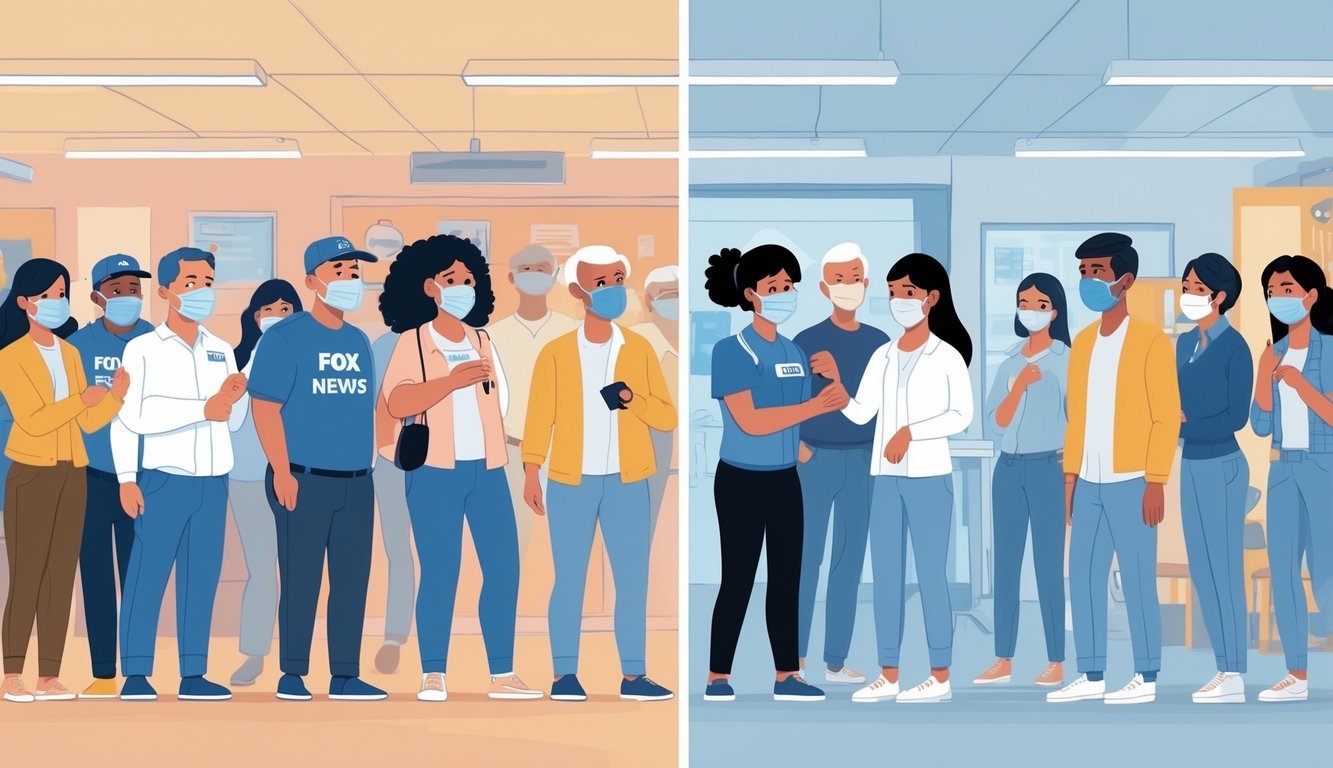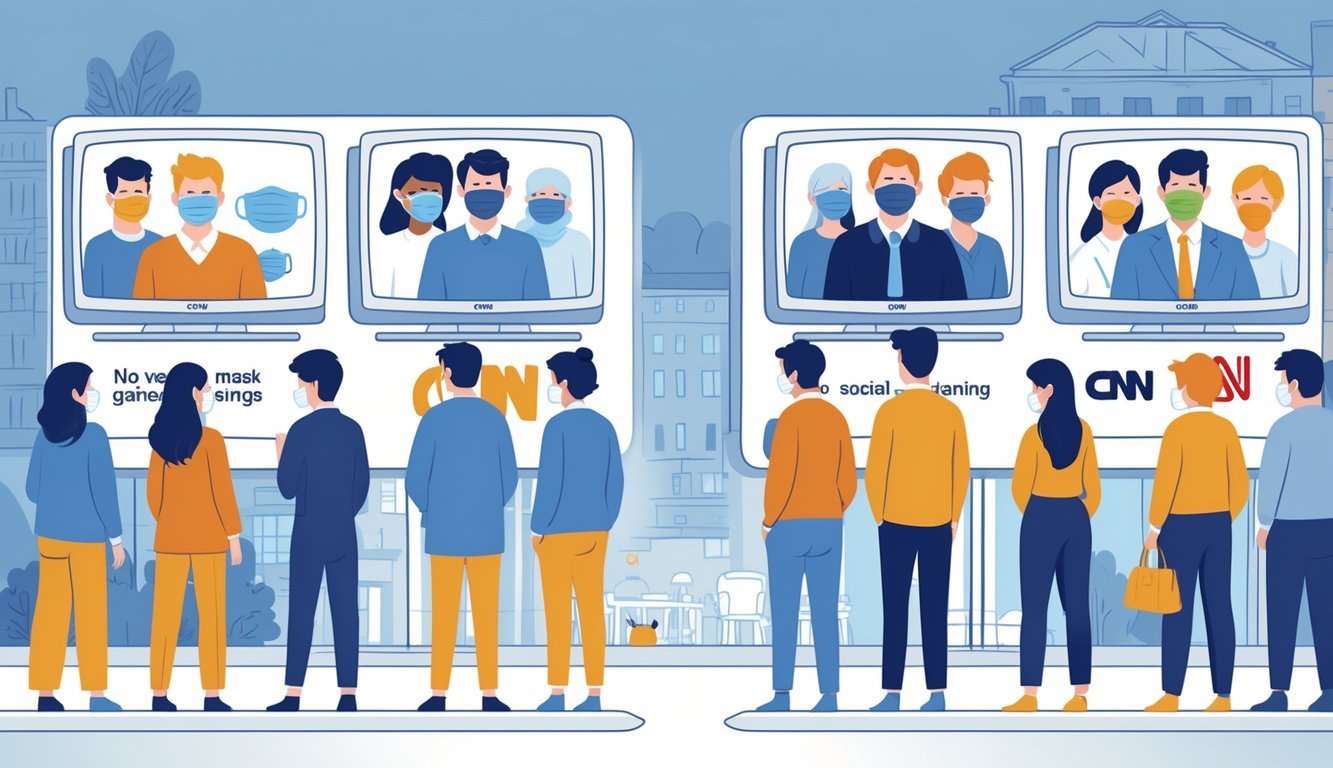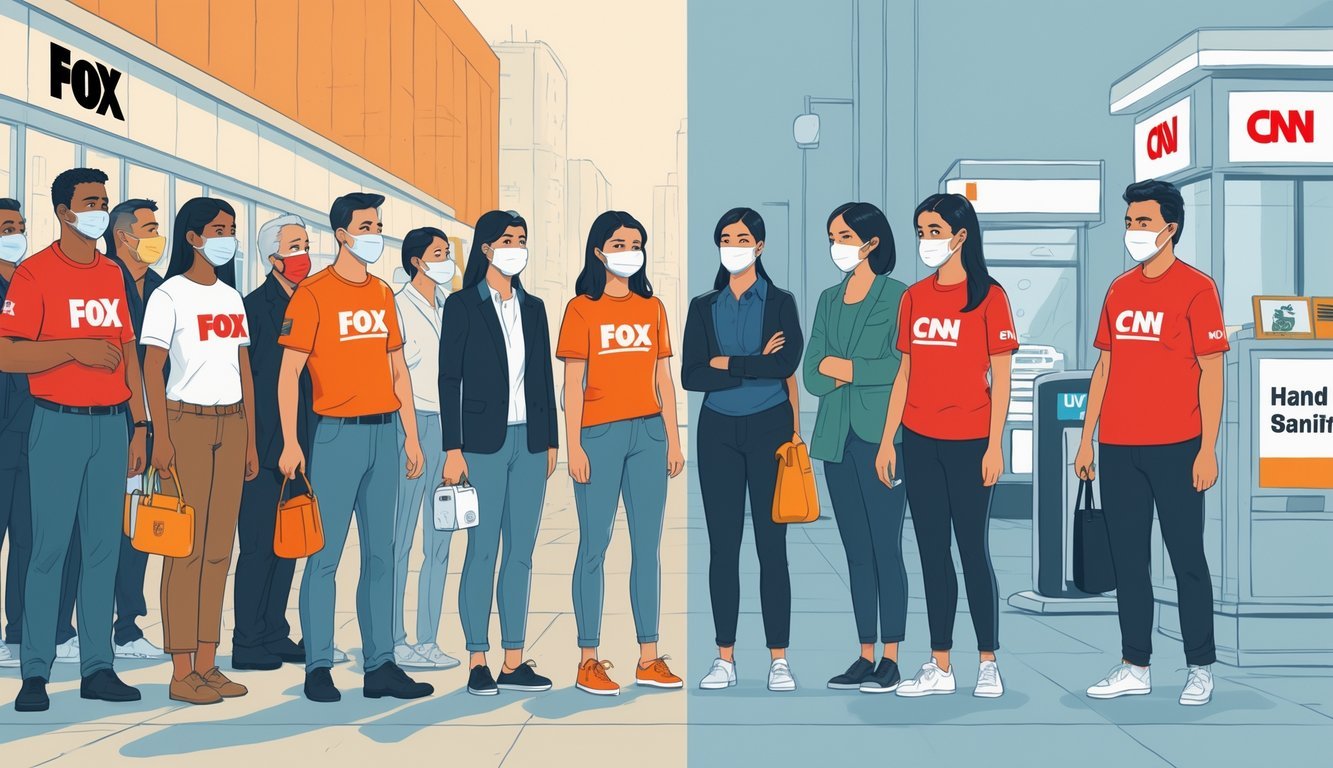PsychNewsDaily Publishers
100 Summit Drive
Burlington, MA, 01803
Telephone: (320) 349-2484
PsychNewsDaily Publishers
100 Summit Drive
Burlington, MA, 01803
Telephone: (320) 349-2484
Media consumption influences COVID-19 safety behaviors, with trust in news sources affecting risk perceptions and adherence to health guidelines, resulting in varied preventive actions among audiences.

When it comes to COVID-19 safety, your news source really does seem to impact your behavior. People who watch Fox News usually take fewer precautions and get involved in riskier actions compared to folks who tune in to CNN.
On average, Fox News viewers participate in more risky behaviors and fewer preventive actions against COVID-19 than CNN viewers.
This gap comes down to how each group trusts and perceives the pandemic. Fox News viewers are more likely to believe COVID-19 risks are overblown, so they act with less caution in daily life.
That pattern says a lot about how media can nudge your choices—and your health.

You’ll spot clear differences in how Fox News and CNN viewers acted during the COVID-19 pandemic. These differences show up in who watches each channel, who actually follows safety rules, and how media shapes health views.
Fox News viewers are usually older, more politically conservative, and live in rural areas.
CNN viewers tend to be younger, more liberal, and stick closer to urban or suburban spots. That alone can sway how each group thinks about COVID-19 risks and safety.
Both groups rely on cable TV for news, but their trust in the media isn’t the same. Fox News fans often think media reports—especially about coronavirus—are exaggerated.
CNN viewers, on the other hand, usually accept the seriousness of the virus and trust health warnings.
When COVID-19 safety came up, Fox News viewers generally took more risks. They wore masks less, skipped social distancing, and were slower to get vaccinated.
CNN viewers followed these precautions more closely.
Studies found Fox News viewers took fewer preventive actions, like mask wearing or avoiding crowds. CNN viewers reported taking about four more preventive steps than Fox watchers and joined in fewer risky activities, like big gatherings.
Your choice of news source changed how seriously you followed CDC or FDA advice. Fox News frequently questioned or played down the virus’s dangers, which made their viewers less concerned and less likely to stick with safety measures.
CNN stuck with steady coverage about COVID-19 risks and prevention. Their viewers ended up trusting health experts and taking recommended actions more often.
Honestly, the media you trust really does shape how you behave during health crises like coronavirus.

How you act during a pandemic touches a lot of your daily life and society, from travel and fitness to mental health and relationships. Even businesses and sports have to adapt.
If you skip safety steps, your travel plans might get riskier. You could travel more and visit crowded places, which bumps up your chances of catching or spreading COVID-19.
That might mean sudden cancellations or even quarantine, which can mess up your routine.
Skipping COVID-19 safety can hit fitness too. Gyms and parks sometimes close after outbreaks linked to risky behavior.
You might find fewer safe spots to work out, and that can slow your fitness progress.
Ignoring COVID-19 risks often leads to more illness and loss in your community. That can raise stress and anxiety for you and people around you.
People who don’t follow safety rules may run into tension with friends or family who stay cautious.
These conflicts can put a strain on relationships, making it tough to support each other emotionally. Plus, worries about illness or isolation can add to depression or loneliness, especially when social events get canceled.
Businesses can struggle when COVID-19 spreads fast because workers get sick or customers stay home. That slows down markets and hits your local economy.
Entertainment and sports, like the Olympics, sometimes get postponed or canceled to protect public health.
If you’re a fan or invested in events, these changes mean fewer chances to enjoy them or see financial returns. Sports leagues might play with empty stands, and that just changes the whole vibe.

You might wonder how watching different news channels changes your view of COVID-19 risks. And how that shapes what you do to protect yourself and others.
If you watch Fox News, you’re more likely to think COVID-19 risks are overblown. Many Fox viewers feel less worried about the pandemic than viewers of other networks.
This can make you take safety measures less seriously.
Yes. CNN viewers tend to do more preventive behaviors like wearing masks and social distancing.
They also take fewer risks than Fox News viewers. So if you trust CNN, you’re likely to follow COVID-19 rules more closely.
The way news covers COVID-19 can shape what you believe. If coverage treats the pandemic seriously and highlights dangers, you’ll probably be more careful.
If it downplays risks, you might skip precautions.
Fox News audiences often skip safety steps like mask-wearing or avoiding crowds. Viewers of CNN and similar networks usually take more preventive actions and avoid risky behavior.
Your choice of news can really change how careful you are.
Yes, where you get your news can shift how you feel about vaccines. People who trust media that downplay COVID-19 risks may be less likely to get vaccinated.
Trusted sources that push health advice tend to encourage more positive views on vaccines.
If you usually watch Fox News, you might question certain public health advice or even think some warnings sound overblown. On the other hand, people who turn to CNN often accept and follow health guidelines without much hesitation.
Honestly, your choice of news can really shape how seriously you treat official health messages. Isn’t it interesting how much influence the media has over our decisions?